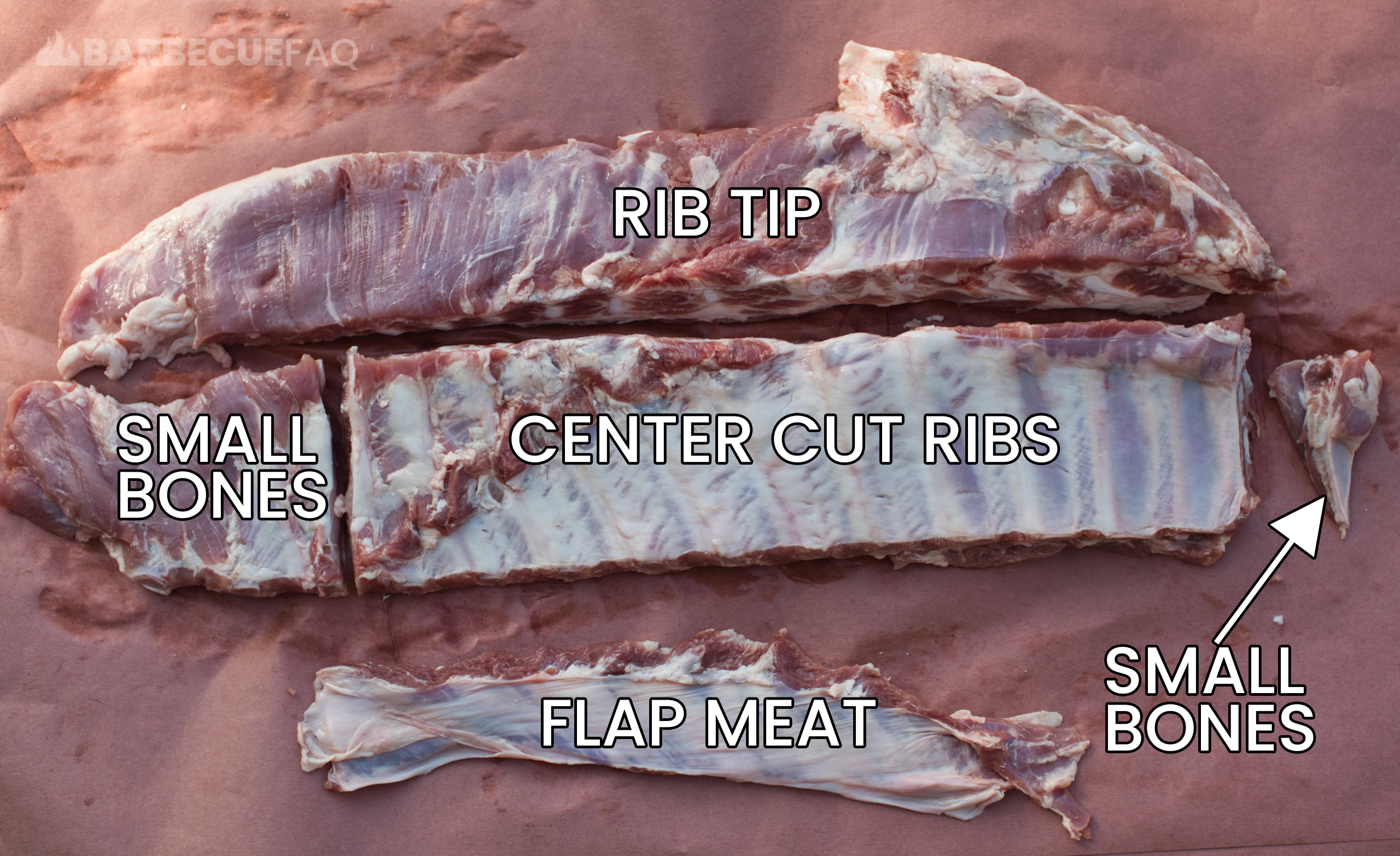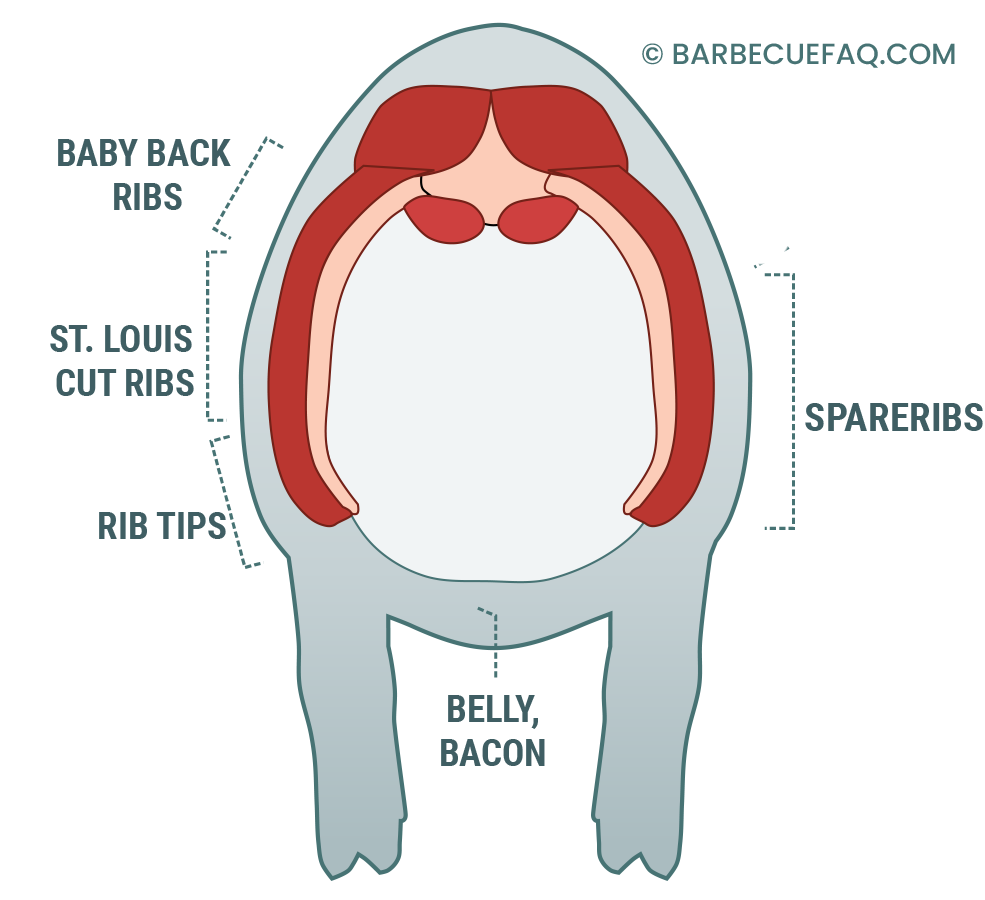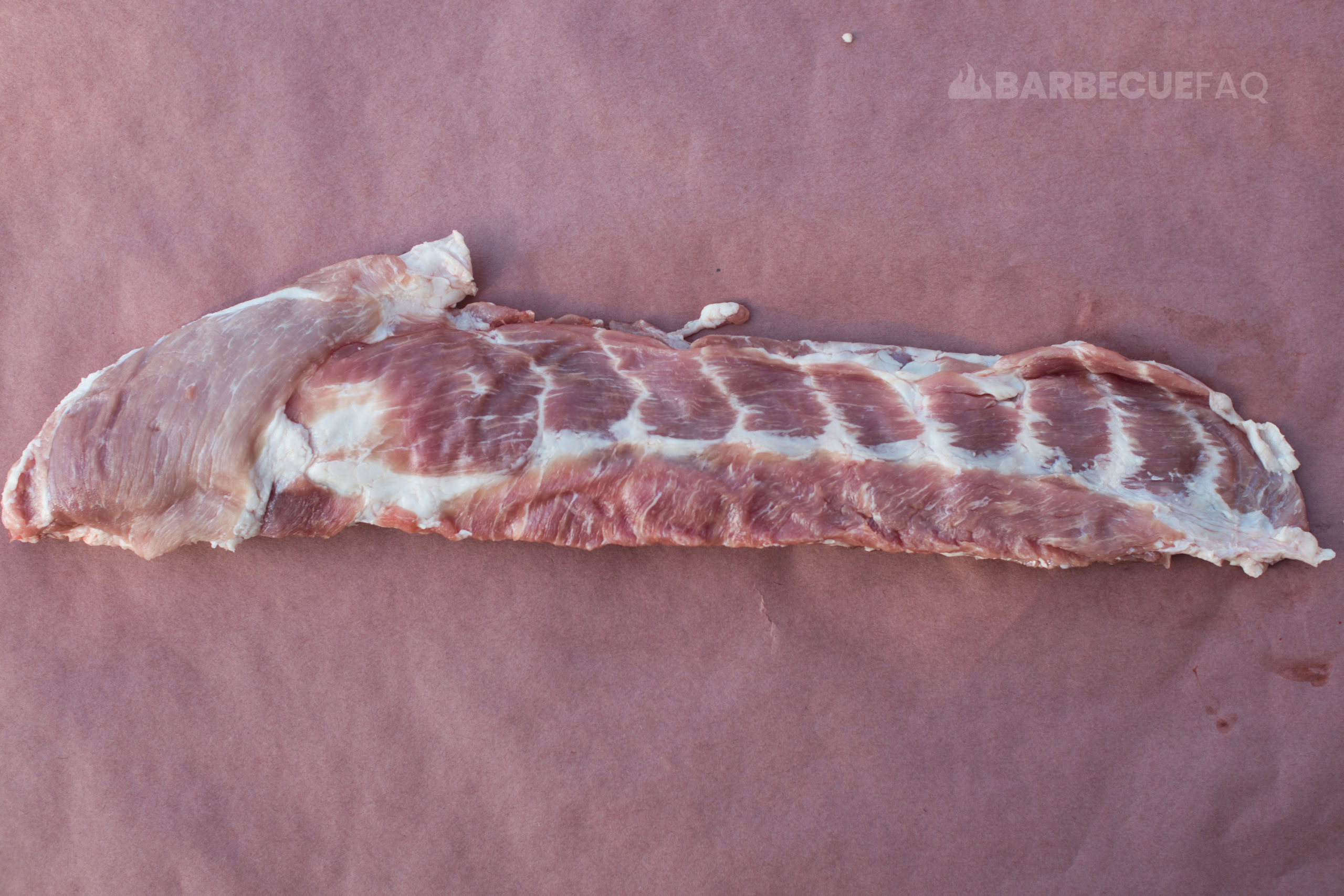Riblets vs Rib Tips: What’s the Difference? – Barbecue FAQ
In the world of ribs, there are two terms that are commonly confused for one another: Riblet and Rib Tip. Truth be told, they are in fact different cuts from a pig.
However, the term “riblet” is so up in the air that it really depends on your definition.
What are “Riblets”?
Butchers, restaurants, grocery stores, even Bloggers, have a way of naming cuts of meat any number of ways.
A term that is known for this is the “riblet.”
Upon researching this, you’ll soon discover that there are a number of different explanations for where the cut is sourced from or what it means to be a “riblet.”
The ideas range from:
- Specific portions of spare ribs that are trimmed.
- Loin ribs sold with the same terminology.
- Loin ribs that are cross cut.
- Riblets and rib tips are the same thing.
- They’re “button ribs” – which aren’t actually rib bones but bones from the back bone or lumbar vertebrae (towards the end of the loin).
You get the gist.
I’d wager to say “Riblet” is more or less a marketing term used to entice your purchase. It’s in a similar vein to baby back ribs being marketed better than spare ribs.
What About Applebee’s “Riblets”?
A restaurant that’s sort of guilty of this is Applebees who sells “Riblets.”
Looking into archives from online Newspapers sort of paints a picture for us:
“Riblets, the trimmed ends of pork tenderloins slowly hickory-roasted in a spicy barbecue sauce, have become a menu favorite at Applebee’s.”
Further down Michelle quotes Franklin Carson who owned 30 Applebee’s Restaurants at the time:
“A meat guy came to Atlanta, where I worked at the time, and I started steaming, smoking and cooking them in the sauce,” he said. “There are only two riblets on a hog, so it takes three hogs to make the dinner. No one else wanted it (the riblets), so we control the market.”
Michelle Jones, Tampa Bay Times, Oct. 19. 1997
It’s important to note that Franklin said “two riblets” – this likely refers to one “riblet” section per half carcass or two “riblet” sections per animal.
To further analyze this we can look at the Institutional Meat Purchase Specifications (IMPS) for Pork where they specify two types of pork Riblets – from the shoulder and the loin.
The shoulder:
Item No. 403D – Pork Shoulder, Riblet – This item consists of the rib and breast bone (sternum) that are removed during the fabrication of Item 403, Pork Shoulder. The back bone (vertebrae and feather bones) must be removed. This item must have no
less than 2 ribs.IMPS, Page 26
These are the 2-4 bones that are left in the pork shoulder (butt) when the pork loin primal is being separated from the shoulder blade primal.
The loin:
Item No. 424 – Pork Loin, Riblet – This item is derived from the transverse processes and associated lean from the lumbar vertebrae of any IMPS bone in pork loin after removal of the tenderloin and the loineye. Riblets must; contain no less
than 4 transverse processes (sometimes referred to as “paddle” or “finger” bones); be held intact by associated lean; and include no more than two rib bones.IMPS, Page 37
I also personally reached out to guest relations for Applebees and was told the following:

Suffice to say, Applebees is referring to the “finger ribs” – colloquially called “Button ribs” to be Riblets.
Butchers refer to these as paddle bones; They are the bone structure immediately between baby back ribs and the hipbone as well as the related intercostal meat (spinal bones are removed).
Again, these aren’t actual rib bones as they’re not connected to the rib cage. They’re the lower lumbar vertebrae which typically contain four “bones” from the spine.
What are Rib Tips?
Unlike riblets, rib tips are more defined from a naming perspective – this is due large in part to trimming styles like the St. Louis Cut.
 St. Louis Cut or “Center Cut” Spare Ribs
St. Louis Cut or “Center Cut” Spare Ribs
Rib tips come from the bottom portion of the spare ribs. As pictured below:

Aside from “rib tip” you’ll also see them called the “costal cartilage” as it connects to the breast bone.
The reason the rib tips are typically removed from spare ribs is because they have tubes of cartilage that run throughout the meat – many people don’t find this part of the spare rib to be particularly appetizing.
Granted some do; My Dad is a good example. He’d rather give me the entire rack of center cut spare ribs (St. Louis cut) and then keep the trimmings/rib tip for himself.
The Difference Between Rib Tips and Riblets
As I hope is readily apparent from the above information, determining differences between rib tips and riblets is hard because everyone uses a different definition for what a Riblet even is.
 Pork Rib Tip
Pork Rib Tip
Even worse is if your definition of a riblet aligns with Applebees.
The reason this is troublesome is because unless you’re buying a whole bone-in pork loin to fabricate yourself, you won’t find “button” or “finger” ribs sold in a grocery store or at a butcher shop (maybe if you know the butcher?).
However, if your definition for a riblet aligns with one of the other opinions:
- Specific portions of spare ribs that are trimmed
- Loin ribs that are cross cut
It’s really as simple as equating riblets to either loin meat (baby back ribs) or to belly meat (spare ribs):
- We know that Rib tips are belly meat so if you think riblets are trimmed portions of spare ribs, then you’re eating the same type of meat as the rib tip.
- If you think they’re cross cut loin ribs, then it’s the same taste as a baby back rib, only a smaller portion.
When comparing these two types of pork ribs: It’s safe to say spare ribs are more meaty but less tender than baby back ribs. However they have more flavor due to the extra fat content.















![Toni Kroos là ai? [ sự thật về tiểu sử đầy đủ Toni Kroos ]](https://evbn.org/wp-content/uploads/New-Project-6635-1671934592.jpg)


